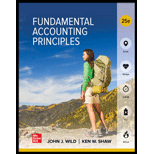
1.
A cost-of-quality (COQ) depicts quality-related costs that a firm incurs during a reporting period. These costs are bifurcated into four categories including prevention costs, appraisal costs, internal failure costs, and external failure costs.
:
The total cost of quality for last year and this year.
2.
A cost-of-quality (COQ) report depicts quality-related costs that a firm incurs during a reporting period, that can help management as well as users to determine total spending on quality, identify the areas that need attention, and improvement, and overtime recognizes the effects of their actions on both total quality costs and the components of overall quality costs.
:
Cost of each category as a percent of the total cost of quality of last year.
3.
A cost-of-quality (COQ) report depicts quality-related costs that a firm incurs during a reporting period, that can help management as well as users to determine total spending on quality, identify the areas that need attention, and improvement, and overtime recognizes the effects of their actions on both total quality costs and the components of overall quality costs.
:
Cost of each category as a percent of the total cost of quality of last year.
4.
A COQ report can help management as well as users to determine total spending on quality, identify the areas that need attention, and improvement, and over time recognizes the effects of their actions on both total quality costs and the components of overall quality costs.
:
Want to see the full answer?
Check out a sample textbook solution
Chapter 4 Solutions
FUND.ACCT.PRIN.
- I need help with this financial accounting problem using accurate calculation methods.arrow_forwardUse the information below to answer the following question Rita Franklin is employed at Mighty Ltd. in Jamaica. For the month of June, 2017, she received a gross salary of $60,000. She contributes 5% or her gross salary towards an approved pension scheme. As an employee, her statutory deductions include NIS, NHT and education tax. What is Rita’s statutory income? A.$53,875 B.$55,500 C.$57,000 D.$63,000arrow_forwardUse the information provided to answer following question Larry Ltd. is a registered VAT taxpayer. His business transactions for the months of January to March are included below. The VAT rate is 12.5%. All the amounts given are VAT inclusive. Months Sales Purchases Imports January $50,625 $30,375 $17,662.50 February $63,337.50 $38,475 $25,087.50 March $67,500 $52,312.50 $22,612.50 What is the Larry Ltd. VAT payable/refund for the 3 months period? A.$13,125 payable B.$1,562.50 refund C.$562.50 refund D.$20,143.50 payablearrow_forward
- I need assistance with this general accounting question using appropriate principles.arrow_forwardI need the correct answer to this general accounting problem using the standard accounting approach.arrow_forwardUse the information provided to answer following question Larry Ltd. is a registered VAT taxpayer. His business transactions for the months of January to March are included below. The VAT rate is 12.5%. All the amounts given are VAT inclusive. Months Sales Purchases Imports January $50,625 $30,375 $17,662.50 February $63,337.50 $38,475 $25,087.50 March $67,500 $52,312.50 $22,612.50 What is the Larry Ltd. VAT output tax for the 3 months period? A.$20,152.50 B.$7,037.50 C.$5,812.50 D.$20,162.50arrow_forward
- Can you demonstrate the accurate method for solving this financial accounting question?arrow_forwardCan you solve this general accounting question with accurate accounting calculations?arrow_forwardUse the information provided to answer following question Larry Ltd. is a registered VAT taxpayer. His business transactions for the months of January to March are included below. The VAT rate is 12.5%. All the amounts given are VAT inclusive. Months Sales Purchases Imports January $50,625 $30,375 $17,662.50 February $63,337.50 $38,475 $25,087.50 March $67,500 $52,312.50 $22,612.50 What is the Larry Ltd. VAT input tax for the 3 months period? A.$7,262.50 B.$13,462.50 C.$20,725 D.$20,162.50arrow_forward
- Principles of Accounting Volume 1AccountingISBN:9781947172685Author:OpenStaxPublisher:OpenStax CollegeCentury 21 Accounting Multicolumn JournalAccountingISBN:9781337679503Author:GilbertsonPublisher:Cengage
 Cornerstones of Financial AccountingAccountingISBN:9781337690881Author:Jay Rich, Jeff JonesPublisher:Cengage Learning
Cornerstones of Financial AccountingAccountingISBN:9781337690881Author:Jay Rich, Jeff JonesPublisher:Cengage Learning  College Accounting, Chapters 1-27AccountingISBN:9781337794756Author:HEINTZ, James A.Publisher:Cengage Learning,
College Accounting, Chapters 1-27AccountingISBN:9781337794756Author:HEINTZ, James A.Publisher:Cengage Learning, College Accounting (Book Only): A Career ApproachAccountingISBN:9781337280570Author:Scott, Cathy J.Publisher:South-Western College Pub
College Accounting (Book Only): A Career ApproachAccountingISBN:9781337280570Author:Scott, Cathy J.Publisher:South-Western College Pub





